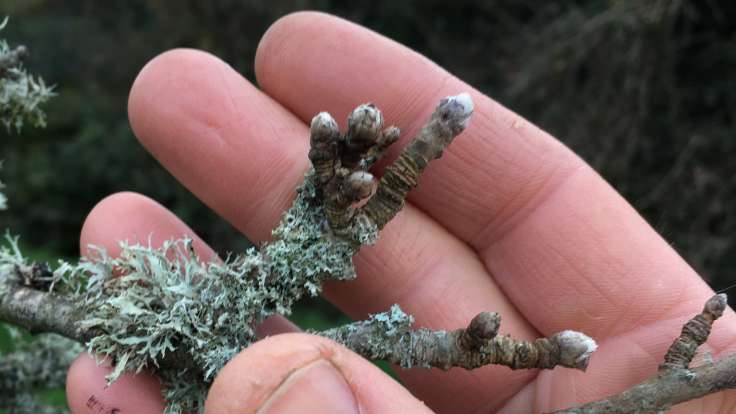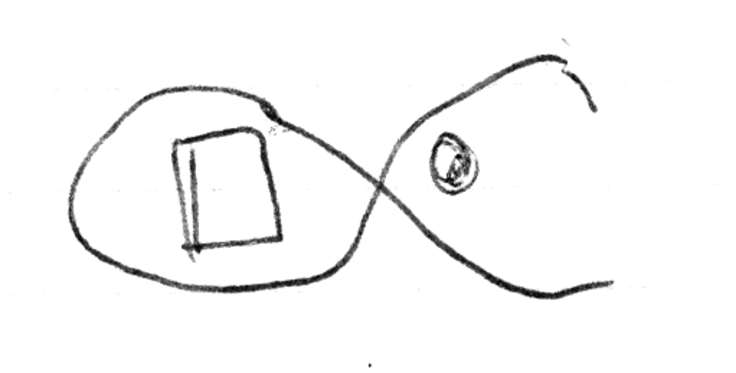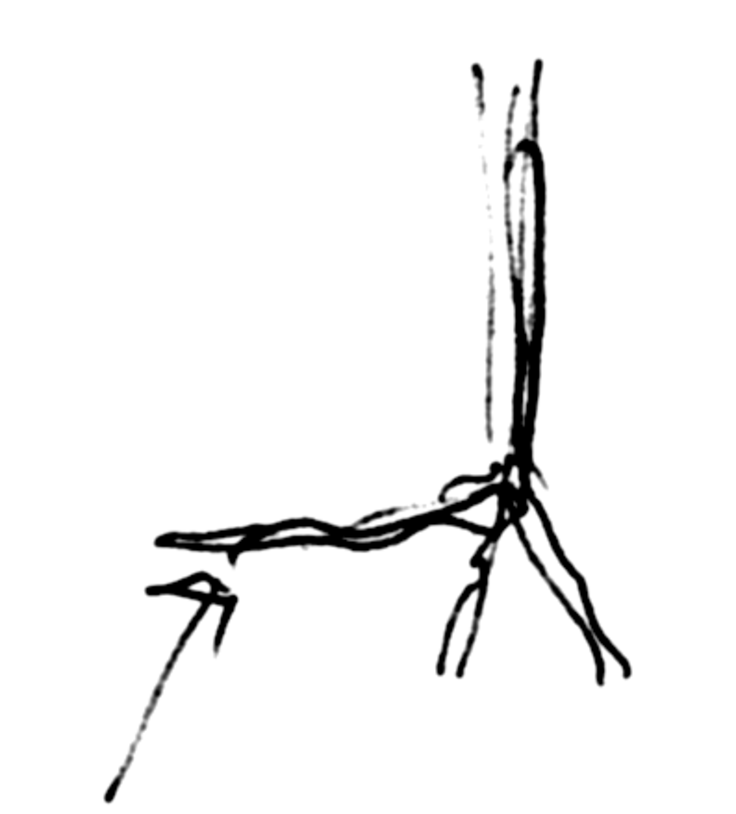
Martin Hayes, Consultant Orchardist, planting trees with The People’s Orchard project, St Dogmaels
Scant notes from the Planting & Pruning workshop held by The People’s Orchard in St Dogmaels on 7th December 2017
On 7th December, I had the good fortune to attend a free Planting & Pruning workshop, held by The People’s Orchard based St Dogmaels Abbey. It was run by Martin Hayes, an orchardist who works regularly for the Gloucestershire Orchard Trust, together with Nia and Sophie from The People’s Orchard. Martin was fantastic, as good with people as with trees, and I learnt a vast amount together with a dozen other volunteers.
As a beginner in everything, I made scribbly notes between wielding secateurs and taking documentary photos. What follows really is aide de memoire tamis for my own benefit.
I have a little rootstock reference which is handy. Different highly bred fruit (eg apples, pears, plums, cherries etc) are grafted on to different rootstock, which determines their vitality and thus height and diameter. I learned that the apple rootstocks MM106 (4m) & M25 (4.5m+) don’t need staking.
I also learnt that you can use single core electric cable to tie the trees to the stake.

Figure of 8 for tying tree to stake
Another handy tip was that it may make a difference planting the lead root windward, ie plant the biggest pointy root toward the prevailing wind.

Other tips include:
- Never let the roots dry out when you’re planting. Put them in water if need be.
- Ian Sturrock & Sons is a very good fruit tree nursery in Bangor
- It’s not always necessary to water trees in if the soil is very damp.
- Rule of thumb: cut 1/3 off, no more
- Always cut to a bud or a branch
- Prune the tree to reclaim the centre line ie where the central trunk should be
- Balance the tree by taking off top-heavy, lop-sided branches
- Prune from the centre, not the edges
- Water shoots are the new vertical shoots which grow in response to pruning
- Bramley particularly vigorous, leave water shoots for upward growth
- Time scale for pruning:
- First year water shoots
- Second year bud
- Third year fruit
The biggest takeaway from the day is to think of the pressure of the sap rising. A tree wants to grow, you just (sic) need to encourage it in the right direction. You may need to leave water shoots where you want the growth, or you may leave a dog-leg shaped shoot, to divert the growth elsewhere.
What you don’t want is lollipopped tree. This is where pruning done in a circle around the edge of the tree. This encourages shoots at the end of the branches.
Omissions, opinions, outrage? Tweet me @NatureWorksGdn 🙂